Are you curious about the height of the peak where the majestic Dong Pagoda sits in Vietnam? Let SIXT.VN, your trusted travel partner, guide you through this spiritual and scenic journey! We’ll not only reveal the elevation but also provide you with essential travel tips for a memorable Vietnam adventure. Discover the best Vietnam travel experiences with expert travel advice and seamless travel planning.
1. What is the Elevation of the Peak Housing Dong Pagoda?
The peak where Dong Pagoda (also known as Thong Pagoda or Bronze Pagoda) is located reaches an impressive height of approximately 1,068 meters (3,504 feet) above sea level. Nestled atop Yen Tu Mountain, this pagoda is a significant Buddhist pilgrimage site in Vietnam, drawing visitors from all over the world.
Understanding the elevation of Dong Pagoda allows travelers to prepare adequately for the journey and appreciate the breathtaking panoramic views from the summit. Let’s delve into why this height is significant and how it enhances the overall travel experience.
1.1 Why is the Height of Dong Pagoda Significant?
The altitude of 1,068 meters gives Dong Pagoda several unique characteristics:
- Spiritual Significance: High altitudes are often associated with spiritual enlightenment and detachment from the material world in many cultures. This makes the mountaintop location of Dong Pagoda ideal for meditation and reflection.
- Panoramic Views: From the peak, visitors can enjoy stunning panoramic views of the surrounding mountains, forests, and coastline. The unobstructed vistas are a major draw for photographers and nature enthusiasts.
- Climatic Conditions: The higher elevation results in cooler temperatures and clearer air, offering a refreshing contrast to the humid lowlands of Vietnam.
- Architectural Achievement: The construction of a pagoda at such a height is a testament to the engineering and architectural skills of the ancient Vietnamese. It showcases human perseverance and dedication to spiritual pursuits.
1.2 Geographical Context of Yen Tu Mountain
Yen Tu Mountain is part of a larger mountain range in Northeastern Vietnam. The region is known for its biodiversity and stunning natural landscapes. Here’s a quick overview of the mountain’s key features:
- Location: Quang Ninh Province, approximately 130 km (80 miles) east of Hanoi.
- Geology: Predominantly limestone karst formations, which contribute to the dramatic scenery.
- Vegetation: Lush forests that are home to various species of flora and fauna, some of which are endemic to the region.
- Historical Significance: Apart from being a Buddhist center, Yen Tu Mountain also holds historical importance as the place where King Tran Nhan Tong founded the Truc Lam Zen Buddhism sect in the 13th century.
1.3 The Pilgrimage Route to Dong Pagoda
The journey to Dong Pagoda is as significant as the destination itself. Pilgrims and tourists often follow a traditional route that includes several temples and pagodas along the way. Here’s what you can expect:
-
Cable Car: A modern cable car system transports visitors from the base of the mountain to a point closer to the summit. This significantly reduces the amount of strenuous climbing required.
-
Hiking: From the cable car station, there is still a considerable climb to reach Dong Pagoda. The path is well-maintained but can be steep in sections.
-
Spiritual Stops: Along the route, you will encounter various temples, shrines, and monuments, each with its own historical and spiritual significance. Key sites include:
- Hua Yen Pagoda: Located near the base of the mountain, it is often the first stop for pilgrims.
- Giai Oan Pagoda: Legend says that King Tran Nhan Tong’s concubines waited here, hoping he would return to the palace. When he didn’t, they committed suicide, and the pagoda was built to honor them.
- Mot Mai Pagoda (One Roof Pagoda): A unique structure built into a cave, offering a serene place for reflection.
-
Final Ascent: The final climb to Dong Pagoda involves navigating steep stone steps, but the stunning views and the spiritual reward make it worthwhile.
Planning Tip: Consider starting your ascent early in the morning to avoid the midday heat and crowds. Wear comfortable shoes, bring plenty of water, and take breaks as needed.
2. What is the Historical Significance of Dong Pagoda?
Dong Pagoda is deeply intertwined with the history of Vietnamese Buddhism. It is not only a place of worship but also a symbol of national pride and cultural heritage.
2.1 Foundation by King Tran Nhan Tong
The story of Dong Pagoda begins with King Tran Nhan Tong (1258-1308), who abdicated his throne to dedicate his life to Buddhism. He established the Truc Lam Zen Buddhism sect, which combined elements of Thiền (Zen), Pure Land Buddhism, and Vinaya (monastic discipline). Yen Tu Mountain became the center of this new Buddhist tradition.
2.2 Construction and Evolution of Dong Pagoda
- Original Structure: The original Dong Pagoda was a modest structure built during the Tran Dynasty (1225-1400). It served as a place for King Tran Nhan Tong and his disciples to practice and teach Buddhism.
- Reconstructions and Renovations: Over the centuries, the pagoda underwent numerous reconstructions and renovations. The most significant occurred in the 18th century under the Le Dynasty.
- Modern Pagoda: The current Dong Pagoda is a modern replica inaugurated in 2007. It is made of bronze and meticulously crafted to resemble the original design. This reflects the enduring importance of Buddhism in Vietnamese culture.
2.3 The Symbolism of the Bronze Structure
The choice of bronze as the primary material for the modern Dong Pagoda carries significant symbolism:
- Durability: Bronze is a durable material that symbolizes the eternal nature of Buddhist teachings.
- Cultural Significance: Bronze casting has a long history in Vietnamese art and craftsmanship. Using bronze pays homage to this tradition.
- Aesthetic Appeal: The bronze surface reflects light in a way that enhances the pagoda’s visual impact, especially during sunrise and sunset.
2.4 How Dong Pagoda Became a Pilgrimage Site
Several factors contributed to Dong Pagoda’s rise as a prominent pilgrimage site:
- Royal Patronage: The association with King Tran Nhan Tong elevated the pagoda’s status and attracted followers from all over the country.
- Spiritual Power: Many believe that Yen Tu Mountain possesses special spiritual energy, making it an ideal place for meditation and enlightenment.
- Accessibility: Despite its remote location, the pagoda became more accessible over time, with improved roads and transportation options.
- Cultural Significance: Dong Pagoda is a symbol of Vietnamese identity and resilience, attracting both domestic and international visitors seeking to connect with the country’s spiritual heritage.
Visiting Tip: Check the schedule for religious ceremonies and festivals at Dong Pagoda. Participating in these events can provide a deeper understanding of the pagoda’s cultural and spiritual significance.
3. What Can You Expect During Your Visit to Dong Pagoda?
Planning a trip to Dong Pagoda requires careful consideration to ensure a comfortable and enriching experience. From transportation options to accommodation choices, every detail matters.
3.1 Getting to Yen Tu Mountain
The first step in visiting Dong Pagoda is reaching Yen Tu Mountain. Here are the most common transportation options:
-
From Hanoi:
- Bus: Several bus companies operate daily services from Hanoi to Uong Bi, the town closest to Yen Tu Mountain. The journey takes approximately 2-3 hours.
- Private Car: Hiring a private car or taxi offers greater flexibility and convenience. SIXT.VN provides reliable car rental services, ensuring a smooth and comfortable ride.
- Tour: Joining a guided tour is a hassle-free option that includes transportation, accommodation, and visits to other nearby attractions.
-
From Ha Long Bay:
- Bus: Local buses connect Ha Long City with Uong Bi. The journey is relatively short, taking around 1-1.5 hours.
- Taxi: Taxis are readily available but can be more expensive than buses.
- Tour: Day trips to Yen Tu Mountain from Ha Long Bay are popular and often include transportation and guided tours.
SIXT.VN Tip: Consider booking a private car through SIXT.VN for a comfortable and personalized travel experience. Our professional drivers ensure you reach your destination safely and on time.
3.2 Accommodation Options Near Yen Tu Mountain
Finding the right accommodation is crucial for a restful and enjoyable visit. Here are some options near Yen Tu Mountain:
-
Yen Tu Village: This village at the foot of the mountain offers a range of hotels and guesthouses catering to different budgets.
- Luxury: Legacy Yen Tu – MGallery offers luxurious rooms and suites with modern amenities and traditional Vietnamese design.
- Mid-Range: Several smaller hotels provide comfortable rooms and essential services.
- Budget: Guesthouses offer basic accommodations at affordable prices.
-
Uong Bi City: Located a short drive from Yen Tu Mountain, Uong Bi offers a wider selection of hotels and restaurants.
-
Ha Long City: If you plan to combine your visit to Yen Tu with a trip to Ha Long Bay, staying in Ha Long City provides convenient access to both attractions.
SIXT.VN Recommendation: Book your hotel through SIXT.VN for the best deals and a wide range of options to suit your preferences and budget.
3.3 What to Pack for Your Trip
Packing appropriately can significantly enhance your experience at Dong Pagoda. Here’s a checklist of essential items:
- Comfortable Shoes: You’ll be doing a lot of walking and climbing, so sturdy and comfortable shoes are a must.
- Lightweight Clothing: Opt for breathable fabrics that will keep you cool in the humid climate.
- Rain Gear: The weather in Northern Vietnam can be unpredictable, so pack a raincoat or umbrella.
- Sunscreen: Protect your skin from the sun’s harmful rays, especially during the daytime climb.
- Insect Repellent: Mosquitoes and other insects can be prevalent, particularly in forested areas.
- Water Bottle: Stay hydrated by carrying a reusable water bottle.
- Snacks: Bring some energy bars or snacks to keep you fueled during the hike.
- Camera: Capture the stunning scenery and memorable moments.
- Cash: While some establishments accept credit cards, it’s always a good idea to have cash on hand, especially for smaller vendors.
3.4 Respectful Attire and Behavior
When visiting Dong Pagoda, it’s important to dress and behave respectfully to honor the sacred nature of the site.
- Dress Modestly: Avoid wearing revealing clothing such as shorts, tank tops, or low-cut tops. Opt for long pants or skirts and shirts with sleeves.
- Remove Hats and Shoes: When entering temples and pagodas, remove your hat and shoes as a sign of respect.
- Speak Softly: Maintain a quiet and respectful demeanor while on the premises.
- No Public Displays of Affection: Avoid kissing, hugging, or other public displays of affection.
- Ask for Permission: Before taking photos of monks or religious ceremonies, ask for permission.
Cultural Tip: Learning a few basic Vietnamese phrases can enhance your interactions with locals and show your respect for their culture.
4. What are the Breathtaking Views from the Peak?
Reaching the summit of Dong Pagoda rewards visitors with panoramic views that are truly breathtaking.
4.1 The Vista of Surrounding Mountains and Forests
From the peak, you can see a seemingly endless expanse of rolling mountains and lush forests. The verdant landscape stretches as far as the eye can see, creating a sense of awe and tranquility.
4.2 Coastal Scenery of Ha Long Bay
On a clear day, you can even catch glimpses of Ha Long Bay in the distance. The iconic limestone karsts rising from the emerald waters create a stunning contrast with the mountainous backdrop.
4.3 Sunrise and Sunset Spectacles
Witnessing sunrise or sunset from Dong Pagoda is an unforgettable experience. The sky transforms into a canvas of vibrant colors, casting a golden glow over the landscape. The play of light and shadows enhances the beauty of the mountains and forests.
4.4 Photography Opportunities
The panoramic views from Dong Pagoda provide endless opportunities for stunning photographs. Whether you’re a professional photographer or an amateur enthusiast, you’ll find plenty of subjects to capture.
Photography Tip: Bring a wide-angle lens to capture the expansive landscape. Experiment with different angles and compositions to create unique and compelling images.
5. What Activities Can You Combine with Your Visit to Dong Pagoda?
A trip to Dong Pagoda can be combined with other exciting activities in the region to create a well-rounded travel experience.
5.1 Exploring Ha Long Bay
Ha Long Bay is a UNESCO World Heritage Site and one of Vietnam’s most iconic destinations. A boat tour through the bay allows you to admire the stunning limestone karsts, explore hidden caves, and enjoy the tranquility of the emerald waters.
5.2 Visiting Other Temples and Pagodas in the Area
Yen Tu Mountain is home to numerous temples and pagodas, each with its own unique history and architecture. Exploring these sites provides a deeper understanding of Vietnamese Buddhism and cultural heritage.
5.3 Hiking and Trekking in Yen Tu National Forest
Yen Tu National Forest offers a range of hiking and trekking trails, catering to different fitness levels. Immerse yourself in the natural beauty of the forest, discover hidden waterfalls, and enjoy the fresh mountain air.
5.4 Experiencing Local Culture in Nearby Villages
Venture into the nearby villages to experience the authentic local culture. Interact with friendly locals, sample traditional Vietnamese cuisine, and learn about their way of life.
Cultural Tip: Consider participating in a cooking class to learn how to prepare traditional Vietnamese dishes. This is a fun and interactive way to immerse yourself in the local culture.
6. What Are Some Essential Travel Tips for Visiting Dong Pagoda?
To ensure a smooth and enjoyable trip to Dong Pagoda, keep these essential travel tips in mind:
6.1 Best Time to Visit
The best time to visit Dong Pagoda is during the dry season, which runs from October to April. The weather is cooler and drier, making it ideal for hiking and exploring. Avoid visiting during the rainy season (May to September), as the trails can be slippery and the views may be obscured by fog.
6.2 Physical Fitness Requirements
The climb to Dong Pagoda can be challenging, especially for those with limited mobility. Assess your physical fitness level before embarking on the journey. Take breaks as needed and don’t hesitate to use the cable car to reduce the amount of climbing.
6.3 Health and Safety Precautions
- Stay Hydrated: Drink plenty of water to avoid dehydration, especially during the hot and humid months.
- Protect Yourself from the Sun: Wear sunscreen, a hat, and sunglasses to protect yourself from the sun’s harmful rays.
- Prevent Insect Bites: Use insect repellent to protect yourself from mosquitoes and other insects.
- Follow Safety Guidelines: Adhere to all safety guidelines and instructions provided by the authorities.
6.4 Local Customs and Etiquette
- Dress Respectfully: Dress modestly when visiting temples and pagodas.
- Remove Shoes and Hats: Remove your shoes and hat before entering sacred sites.
- Speak Softly: Maintain a quiet and respectful demeanor.
- Ask for Permission: Ask for permission before taking photos of monks or religious ceremonies.
Travel Tip: Learning a few basic Vietnamese phrases can enhance your interactions with locals and show your respect for their culture.
7. How Can SIXT.VN Enhance Your Travel Experience to Dong Pagoda?
SIXT.VN offers a range of services designed to enhance your travel experience to Dong Pagoda and other destinations in Vietnam.
7.1 Car Rental Services
Enjoy the freedom and flexibility of exploring Vietnam at your own pace with SIXT.VN’s reliable car rental services. Choose from a wide selection of vehicles to suit your needs and budget.
7.2 Airport Transfer Services
Start your trip off right with SIXT.VN’s convenient airport transfer services. Our professional drivers will pick you up from the airport and take you directly to your hotel or other destination.
7.3 Hotel Booking Services
Find the perfect accommodation for your trip with SIXT.VN’s extensive hotel booking services. We offer a wide range of options to suit your preferences and budget.
7.4 Tour Packages
Let SIXT.VN take care of all the details with our comprehensive tour packages. We offer a variety of tours to Dong Pagoda and other destinations in Vietnam, catering to different interests and budgets.
SIXT.VN Advantage: With SIXT.VN, you can enjoy a seamless and stress-free travel experience, from transportation and accommodation to guided tours and cultural insights.
8. What Are Some Hidden Gems Near Dong Pagoda?
While Dong Pagoda is the main attraction, the surrounding area is filled with hidden gems waiting to be discovered.
8.1 Ba Vang Pagoda
Located near Yen Tu Mountain, Ba Vang Pagoda is a magnificent temple known for its impressive architecture and serene atmosphere. The pagoda features intricate carvings, beautiful gardens, and a towering bell tower.
8.2 Long Tien Pagoda
Situated in Ha Long City, Long Tien Pagoda is a popular Buddhist temple that attracts both locals and tourists. The pagoda is known for its stunning views of Ha Long Bay and its peaceful ambiance.
8.3 Cua Ong Temple
Located on the coast near Bai Tu Long Bay, Cua Ong Temple is dedicated to General Tran Quoc Tang, a hero of the Tran Dynasty. The temple offers stunning views of the bay and is a popular spot for pilgrims and tourists.
8.4 Cai Bau Pagoda (Truc Lam Giac Tam Zen Monastery)
Located on Van Don Island, Cai Bau Pagoda is a serene Zen monastery with beautiful gardens and stunning views of Bai Tu Long Bay. The pagoda is a peaceful retreat for those seeking tranquility and reflection.
Exploration Tip: Rent a car from SIXT.VN to explore these hidden gems at your own pace. Our reliable vehicles and professional drivers ensure a comfortable and convenient journey.
9. What is the Significance of Yen Tu Mountain in Vietnamese Culture?
Yen Tu Mountain holds a special place in Vietnamese culture and history.
9.1 Birthplace of Truc Lam Zen Buddhism
Yen Tu Mountain is considered the birthplace of Truc Lam Zen Buddhism, a unique Vietnamese Buddhist tradition founded by King Tran Nhan Tong in the 13th century. This makes the mountain a sacred site for Buddhists in Vietnam and around the world.
9.2 Symbol of National Pride
Yen Tu Mountain is a symbol of Vietnamese national pride and cultural identity. The mountain has been a source of inspiration for artists, writers, and poets throughout Vietnamese history.
9.3 Preservation of Cultural Heritage
The Vietnamese government has made significant efforts to preserve the cultural heritage of Yen Tu Mountain. The site has been designated as a special national monument and is being considered for UNESCO World Heritage status.
9.4 Spiritual Retreat and Pilgrimage Site
Yen Tu Mountain continues to be a popular spiritual retreat and pilgrimage site for Buddhists and other visitors seeking tranquility and reflection.
Historical Note: The establishment of Truc Lam Zen Buddhism by King Tran Nhan Tong marked a significant turning point in Vietnamese history, as it helped to unify the country and promote a sense of national identity.
10. Frequently Asked Questions (FAQs) About Dong Pagoda
Here are some frequently asked questions about visiting Dong Pagoda:
-
What is the best way to get to Dong Pagoda from Hanoi?
The best way to get to Dong Pagoda from Hanoi is by bus, private car, or guided tour. SIXT.VN offers reliable car rental and airport transfer services for a comfortable and convenient journey.
-
How long does it take to climb to Dong Pagoda?
The climb to Dong Pagoda takes approximately 2-3 hours, depending on your fitness level and the number of stops you make along the way.
-
What should I wear when visiting Dong Pagoda?
Dress modestly when visiting Dong Pagoda. Opt for long pants or skirts and shirts with sleeves.
-
Is there a cable car to Dong Pagoda?
Yes, there is a cable car that takes visitors partway up the mountain. From the cable car station, there is still a considerable climb to reach Dong Pagoda.
-
What is the entrance fee to Dong Pagoda?
There is no entrance fee to Dong Pagoda, but there is a fee for the cable car.
-
Can I visit Dong Pagoda on a day trip from Ha Long Bay?
Yes, day trips to Dong Pagoda from Ha Long Bay are popular and often include transportation and guided tours.
-
What are some other attractions near Dong Pagoda?
Other attractions near Dong Pagoda include Ba Vang Pagoda, Long Tien Pagoda, and Cua Ong Temple.
-
Is it safe to visit Dong Pagoda?
Yes, it is generally safe to visit Dong Pagoda. However, it is important to take precautions such as staying hydrated, protecting yourself from the sun, and preventing insect bites.
-
What is the significance of the bronze structure of Dong Pagoda?
The bronze structure symbolizes durability, cultural significance, and aesthetic appeal.
-
How can SIXT.VN help me plan my trip to Dong Pagoda?
SIXT.VN offers a range of services designed to enhance your travel experience, including car rental, airport transfer, hotel booking, and tour packages.
Ready to embark on your unforgettable journey to Dong Pagoda? Let SIXT.VN be your trusted travel companion, providing seamless transportation, comfortable accommodations, and expert guidance every step of the way. Contact us today to start planning your adventure!
Address: 260 Cau Giay, Hanoi, Vietnam
Hotline/Whatsapp: +84 986 244 358
Website: SIXT.VN
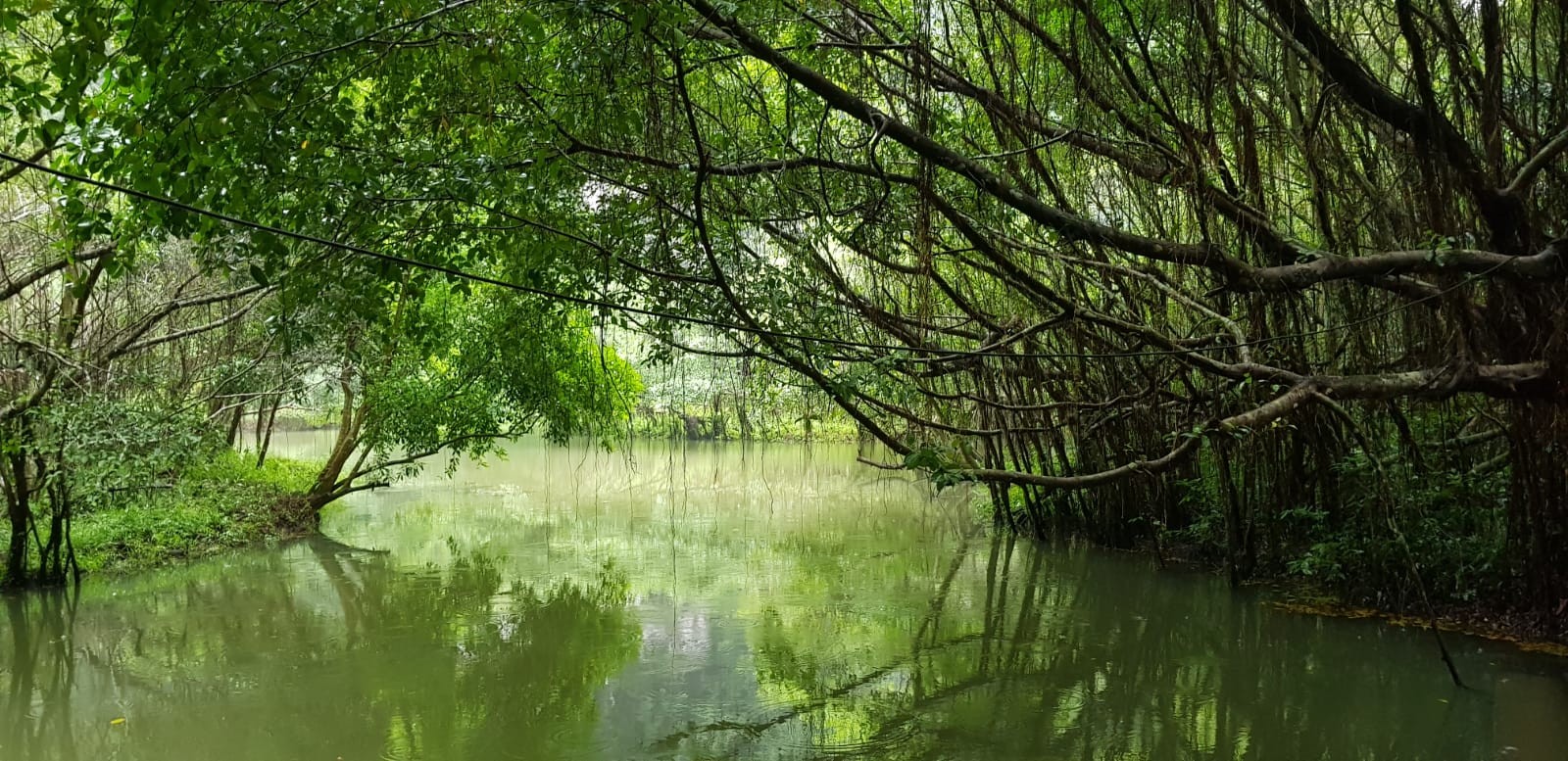 Boats in the river in Ninh Binh, Vietnam
Boats in the river in Ninh Binh, Vietnam
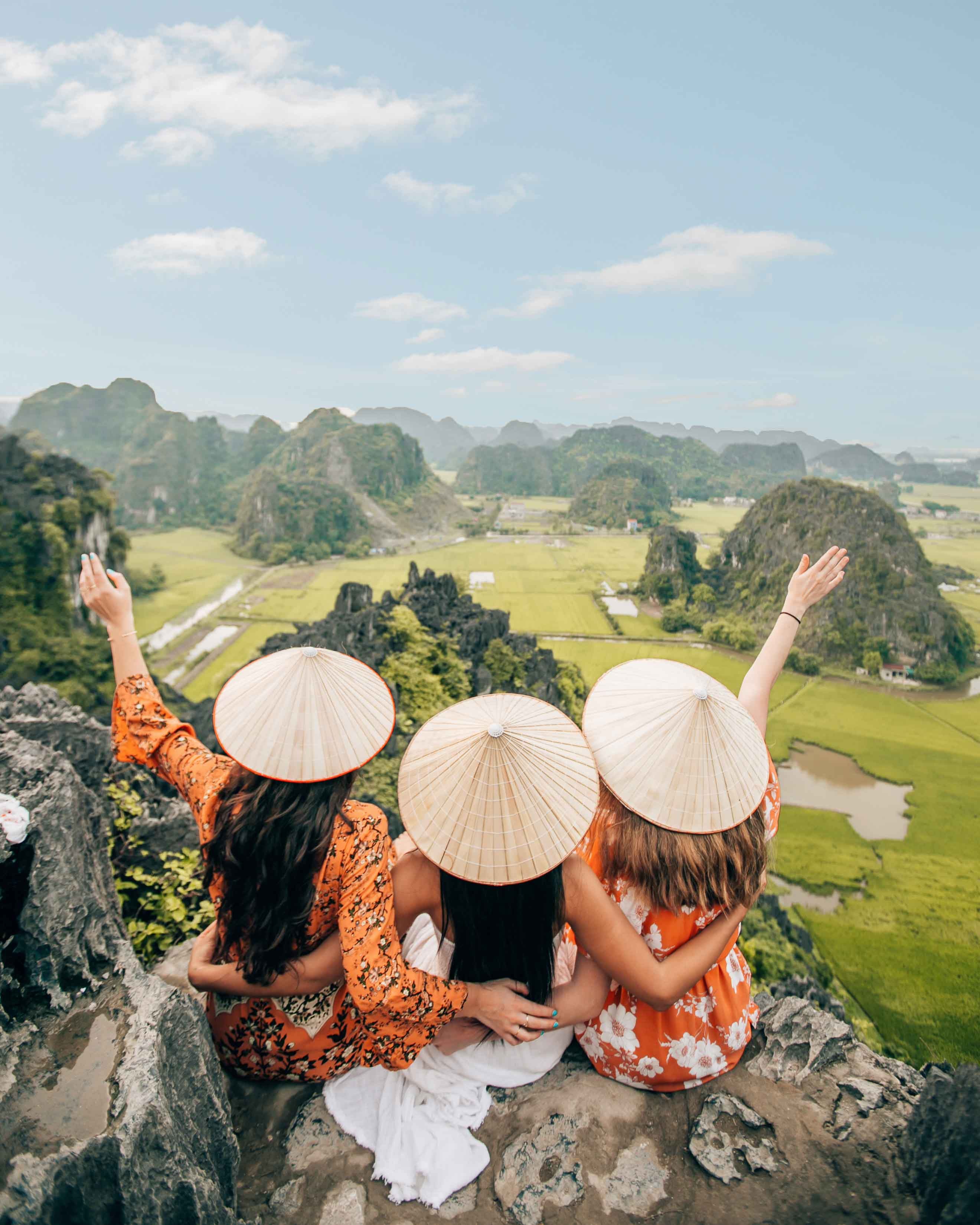 3 girls sitting at the peak of Lying Dragon Mountain overlooking rice fields and mountains
3 girls sitting at the peak of Lying Dragon Mountain overlooking rice fields and mountains
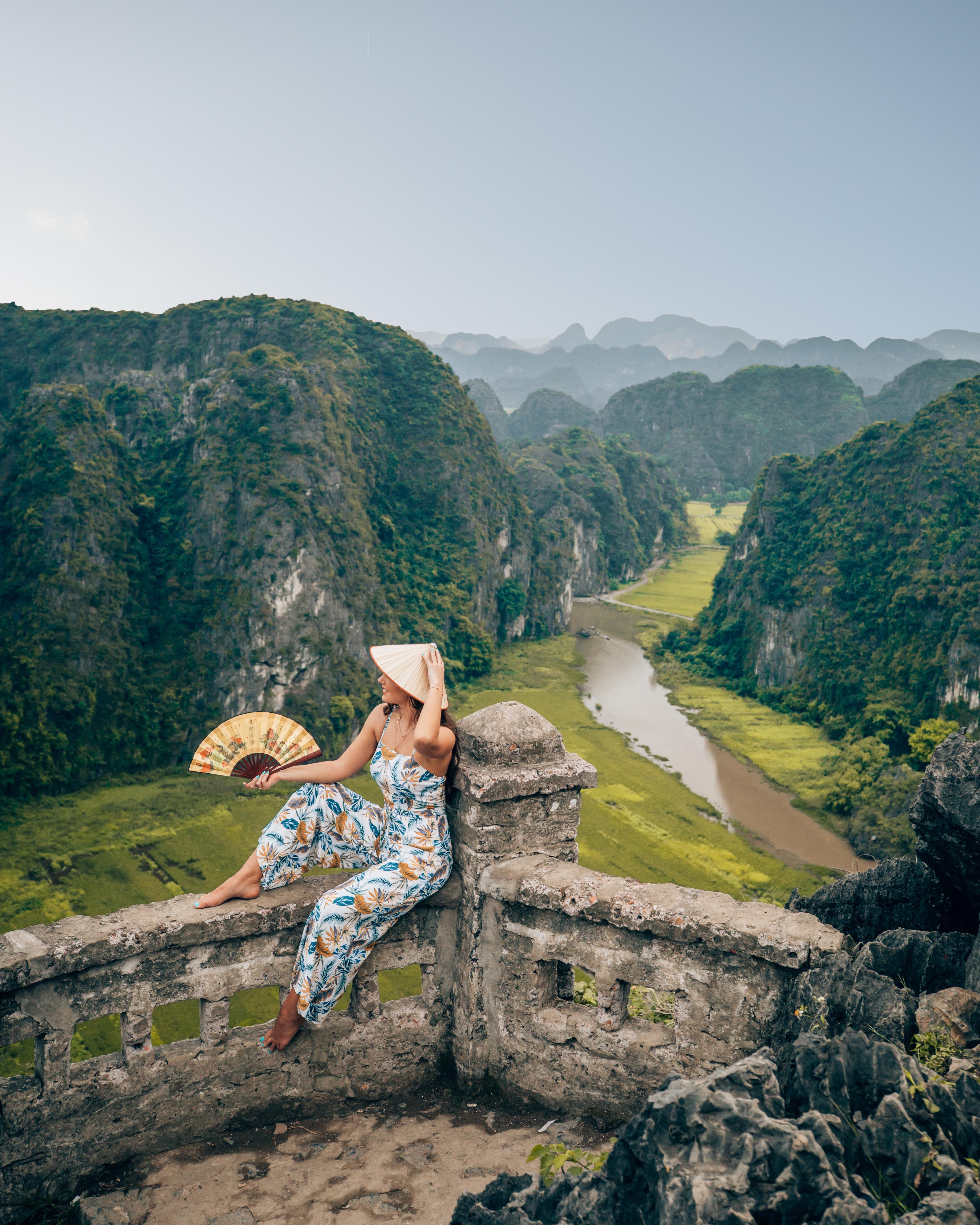 Sitting at the peak of Lying Dragon Mountain overlooking the mountains, rice fields and river
Sitting at the peak of Lying Dragon Mountain overlooking the mountains, rice fields and river
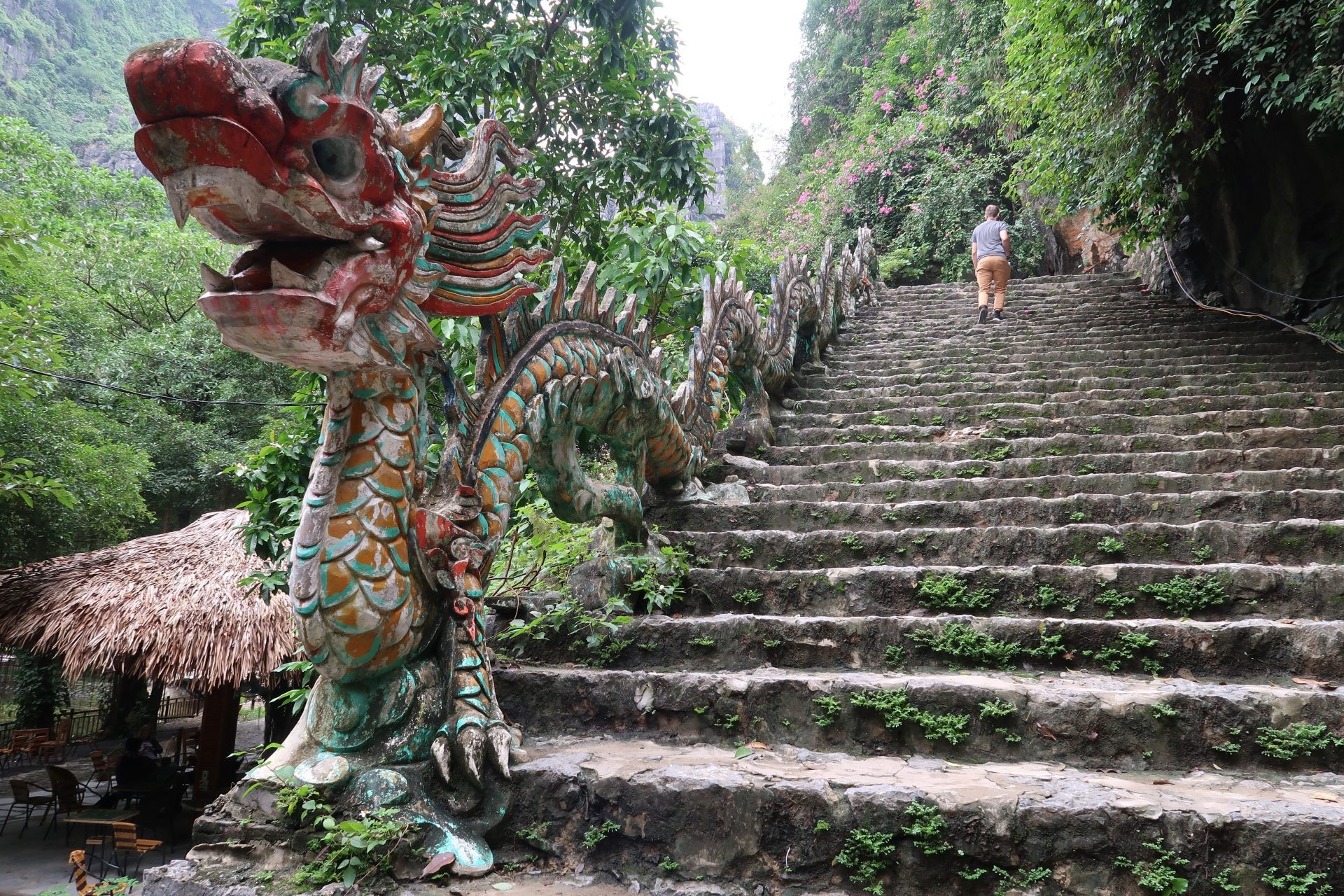 Sitting on a bamboo canoe in the river
Sitting on a bamboo canoe in the river
 Standing on top of a bamboo canoe in the river
Standing on top of a bamboo canoe in the river
 Walking through rice fields
Walking through rice fields
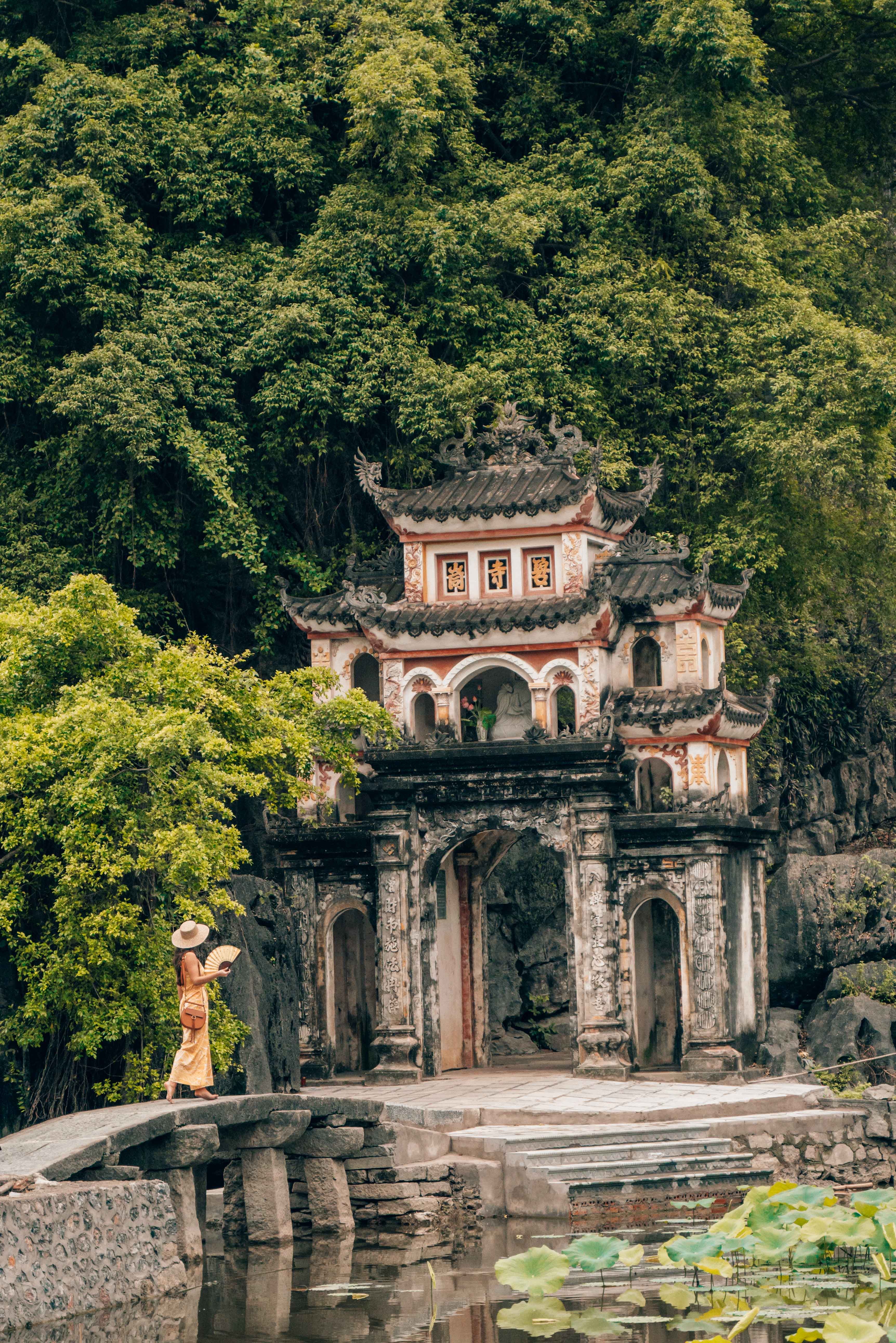 View of Bich Dong Pagoda and the lotus pond
View of Bich Dong Pagoda and the lotus pond
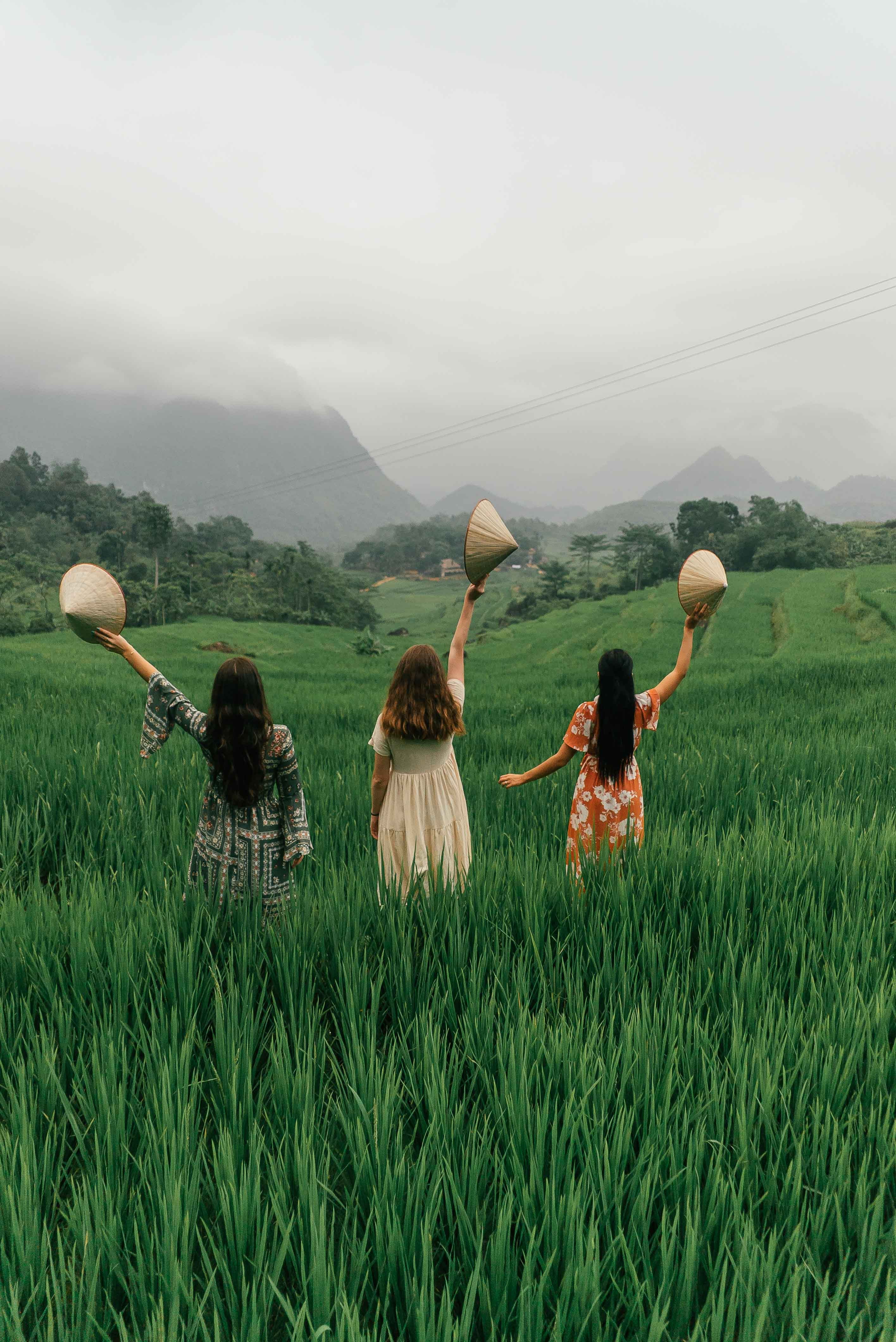 Rice terraces at Pu Luong Retreat, Vietnam
Rice terraces at Pu Luong Retreat, Vietnam
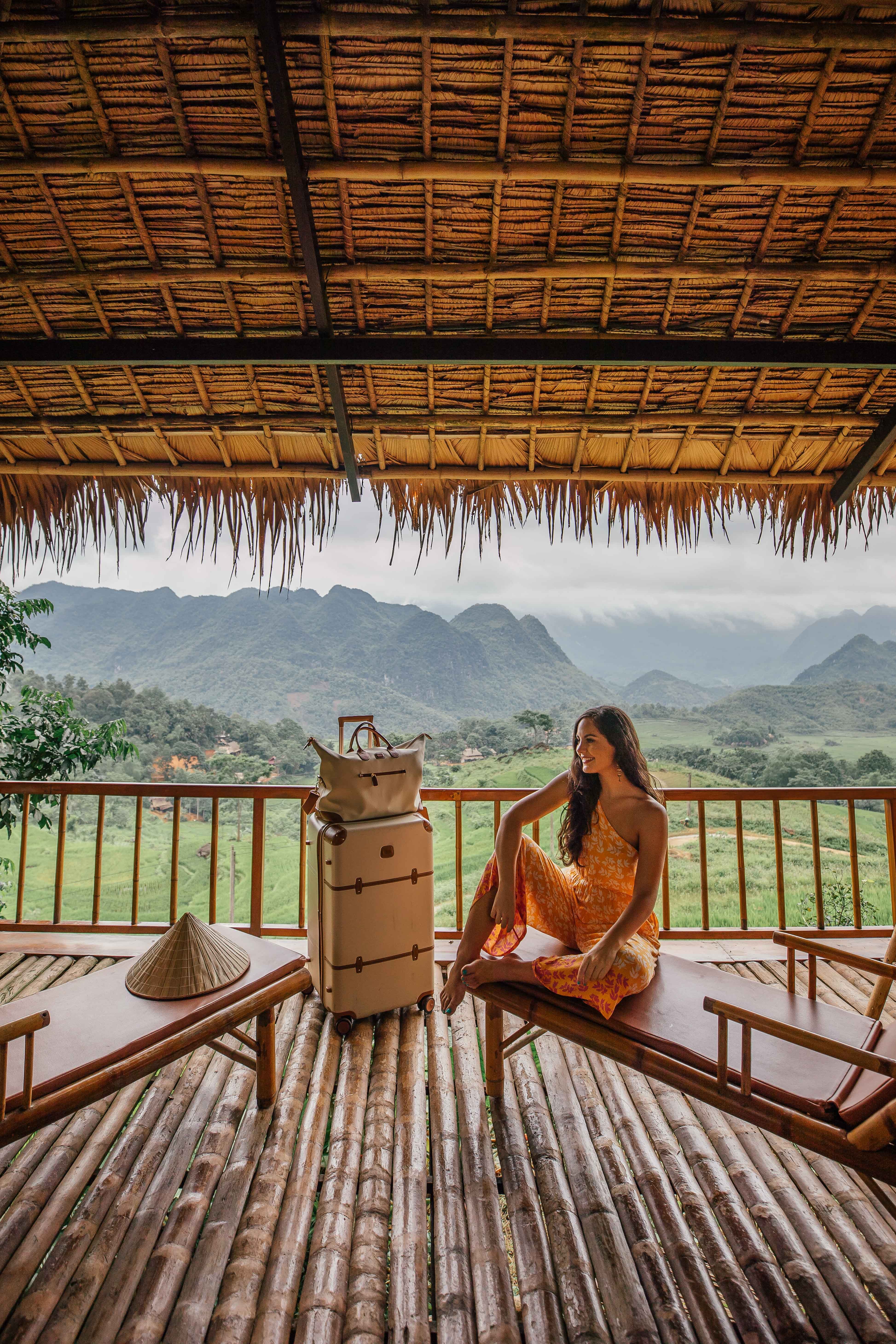 View from the hotel balcony at Pu Luong Retreat overlooking the rice terraces and mountains
View from the hotel balcony at Pu Luong Retreat overlooking the rice terraces and mountains
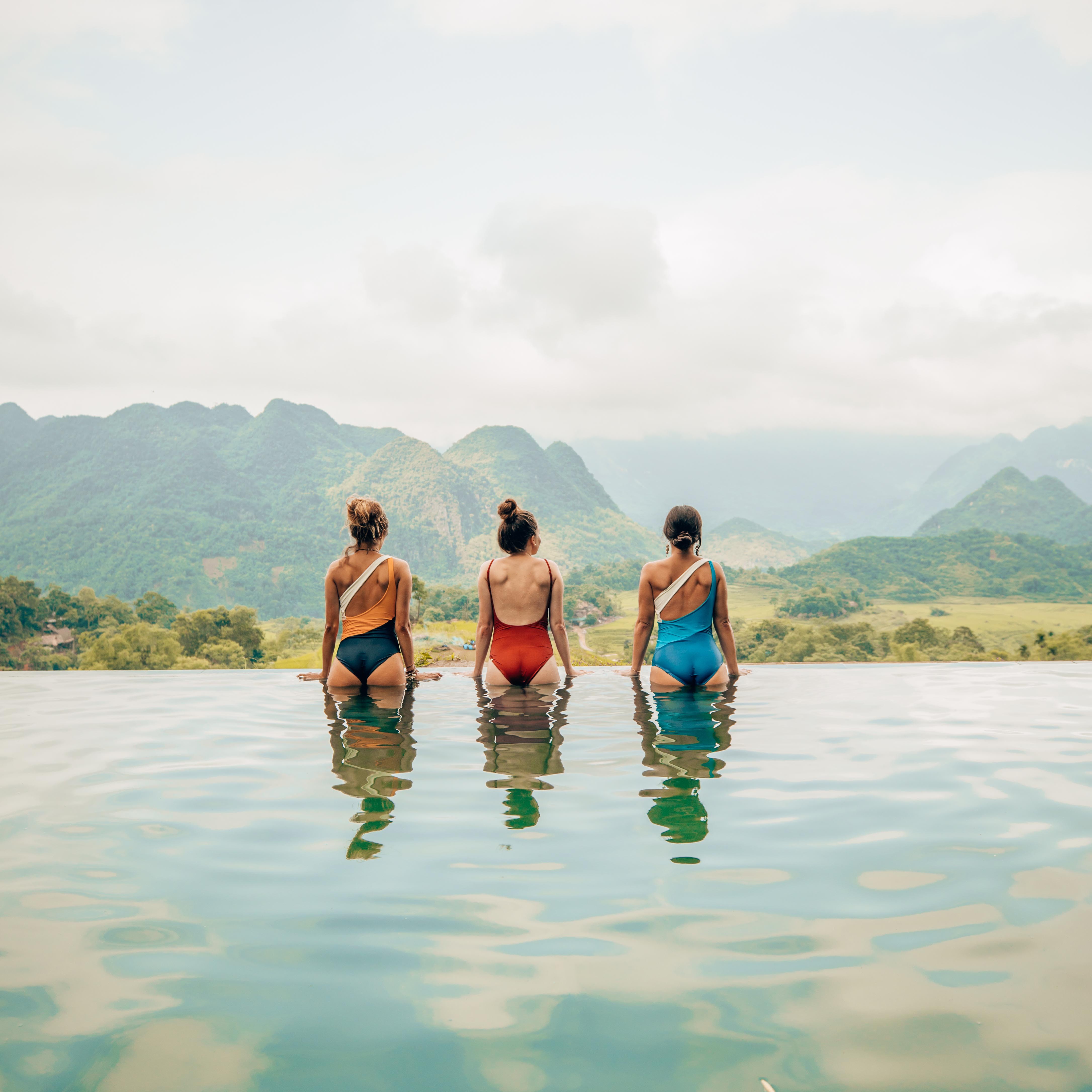 Infinity pool at Pu Luong Retreat, overlooking the rice terraces and mountains
Infinity pool at Pu Luong Retreat, overlooking the rice terraces and mountains
 Suitcase luggage sitting on the hotel balcony overlooking the rice terraces and mountains
Suitcase luggage sitting on the hotel balcony overlooking the rice terraces and mountains
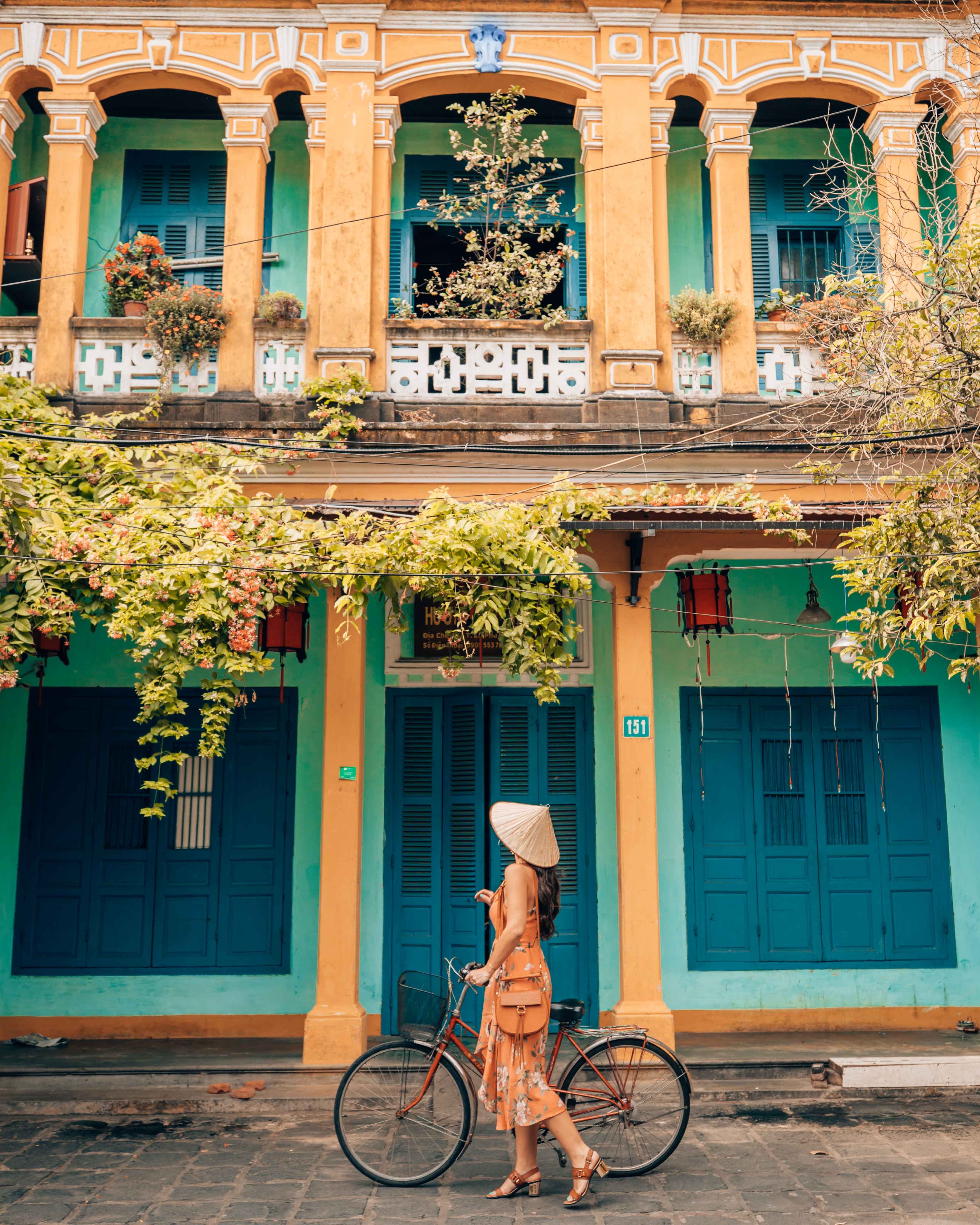 Yellow and blue historical building in Hoi An
Yellow and blue historical building in Hoi An
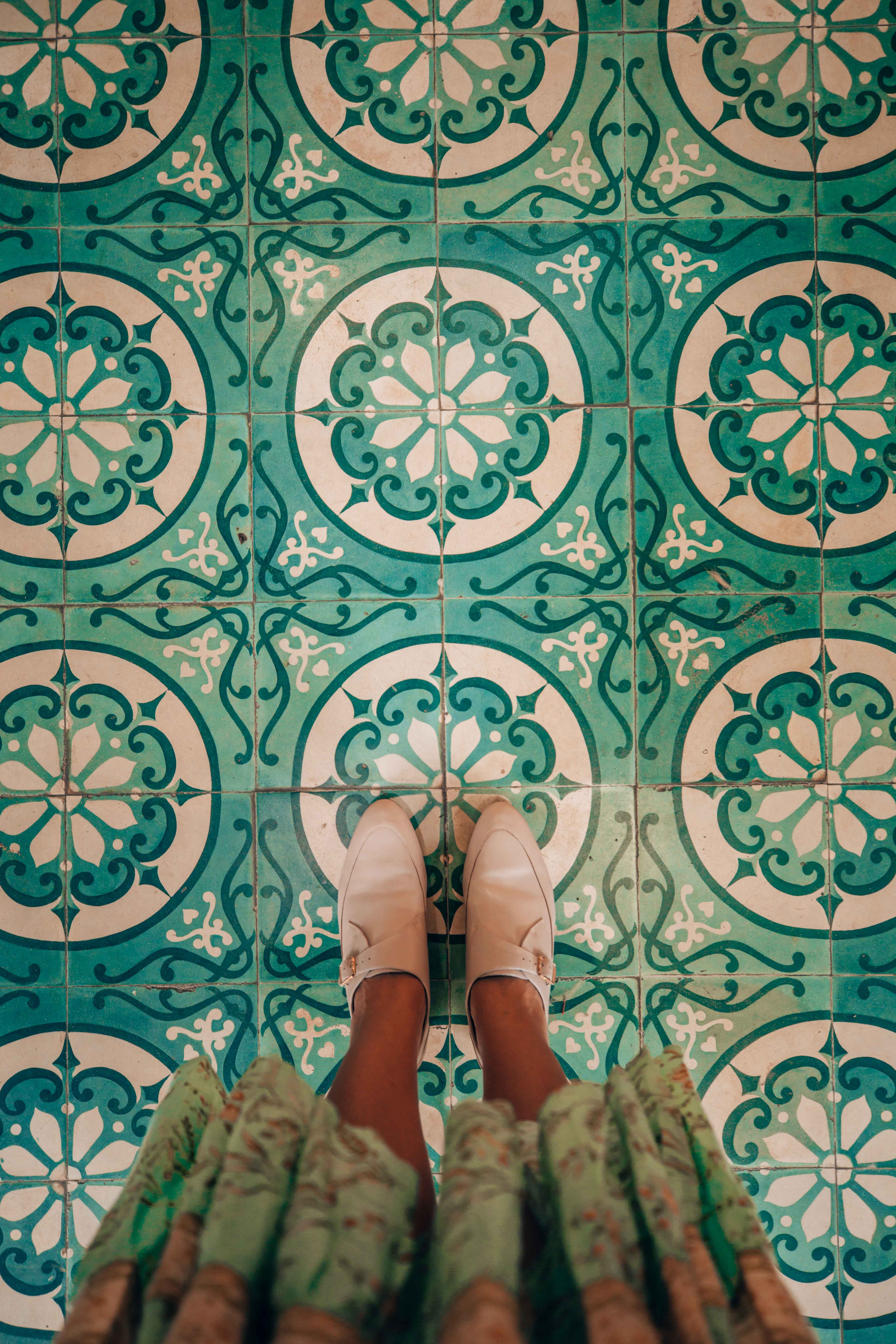 Blue and white tiles in Hoi An
Blue and white tiles in Hoi An
Tranquil swimming pool at The Mansion Hotel in Hoi An, offering a serene retreat.
A vibrant lantern stall illuminates Hoi An’s market, showcasing the city’s rich cultural heritage.
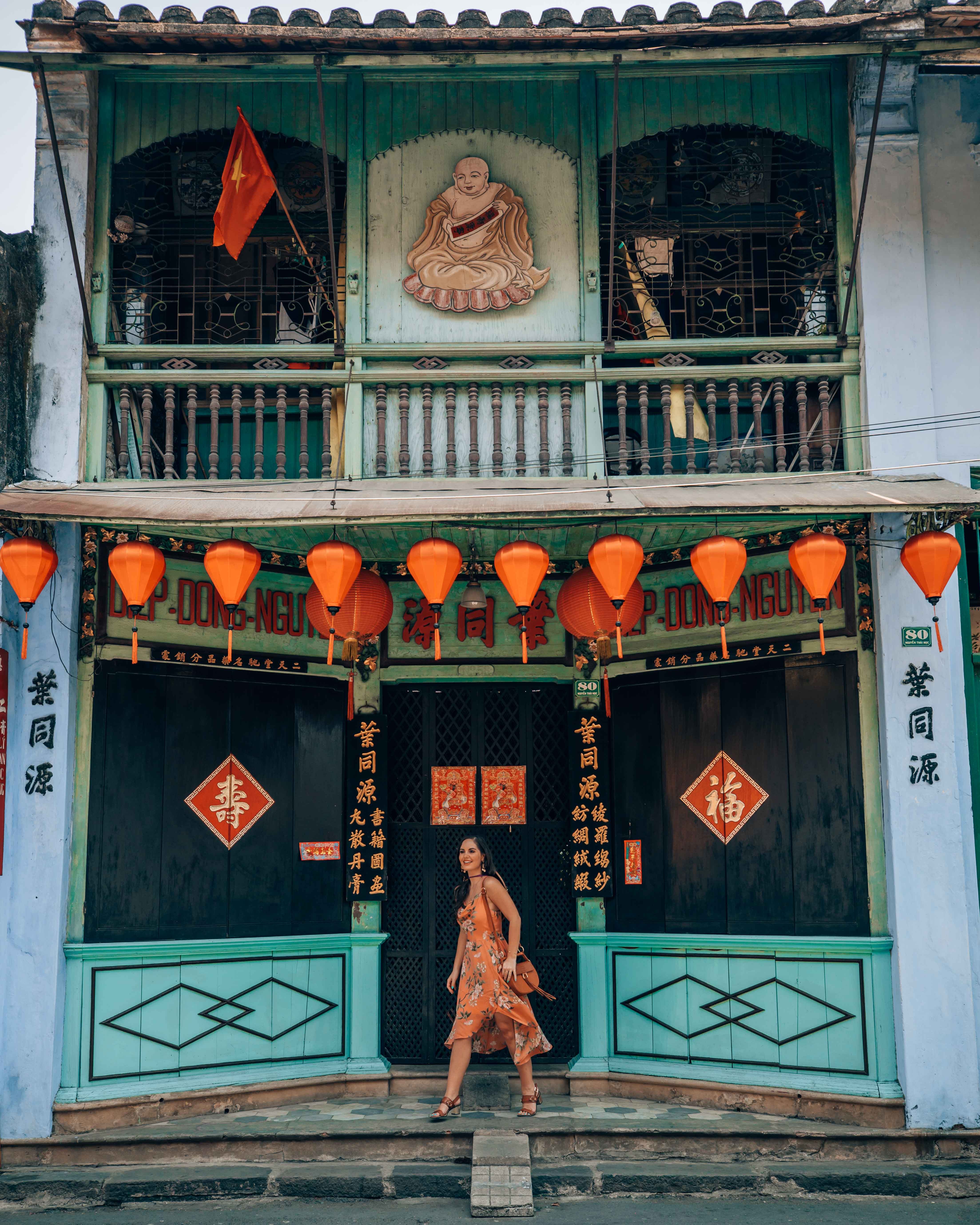 Historical building in Hoi An with lantern decorations
Historical building in Hoi An with lantern decorations
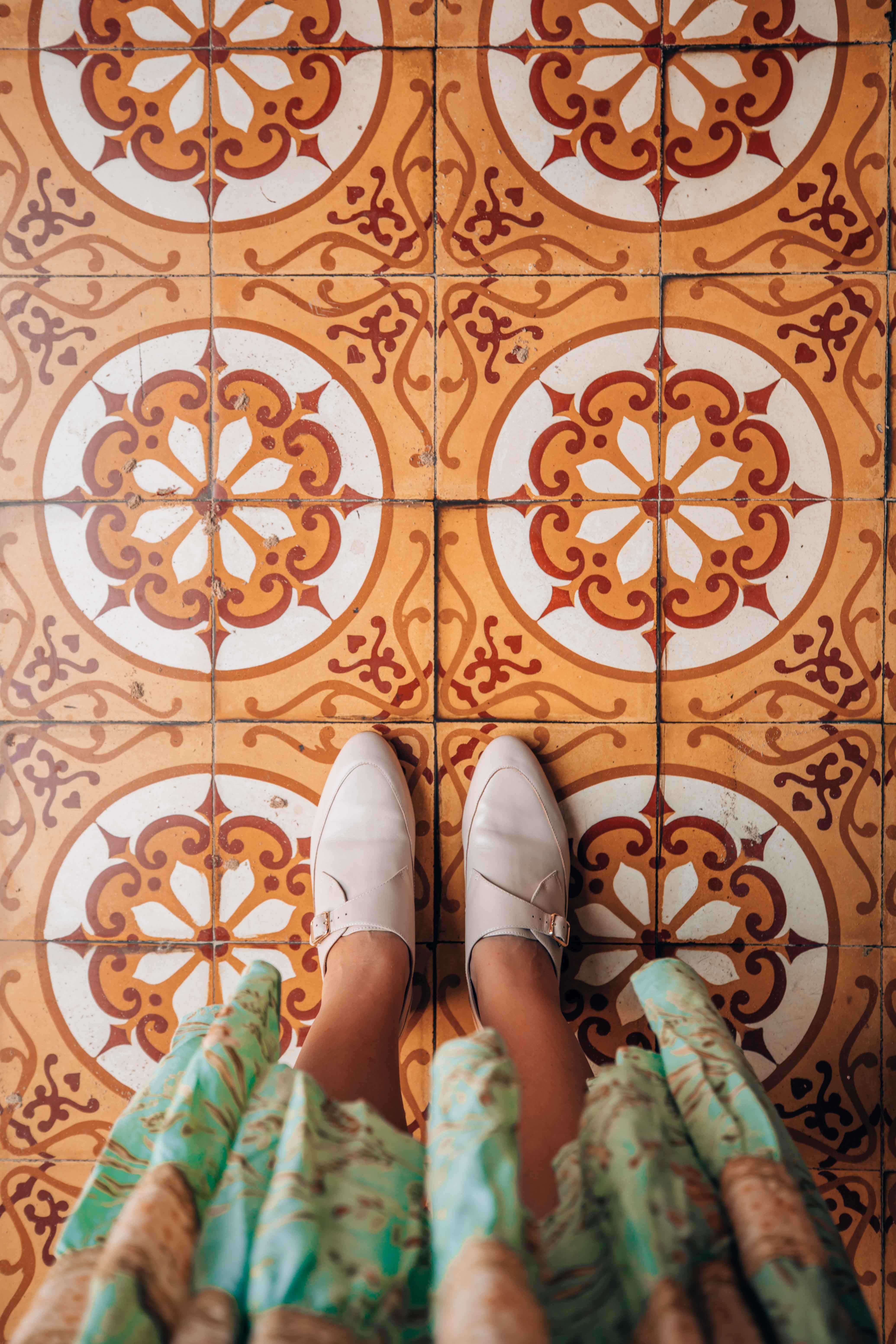 Yellow and white floor tiles in Hoi An
Yellow and white floor tiles in Hoi An
A charming shop in Hoi An’s old town adorned with vibrant hanging floral pot plants.
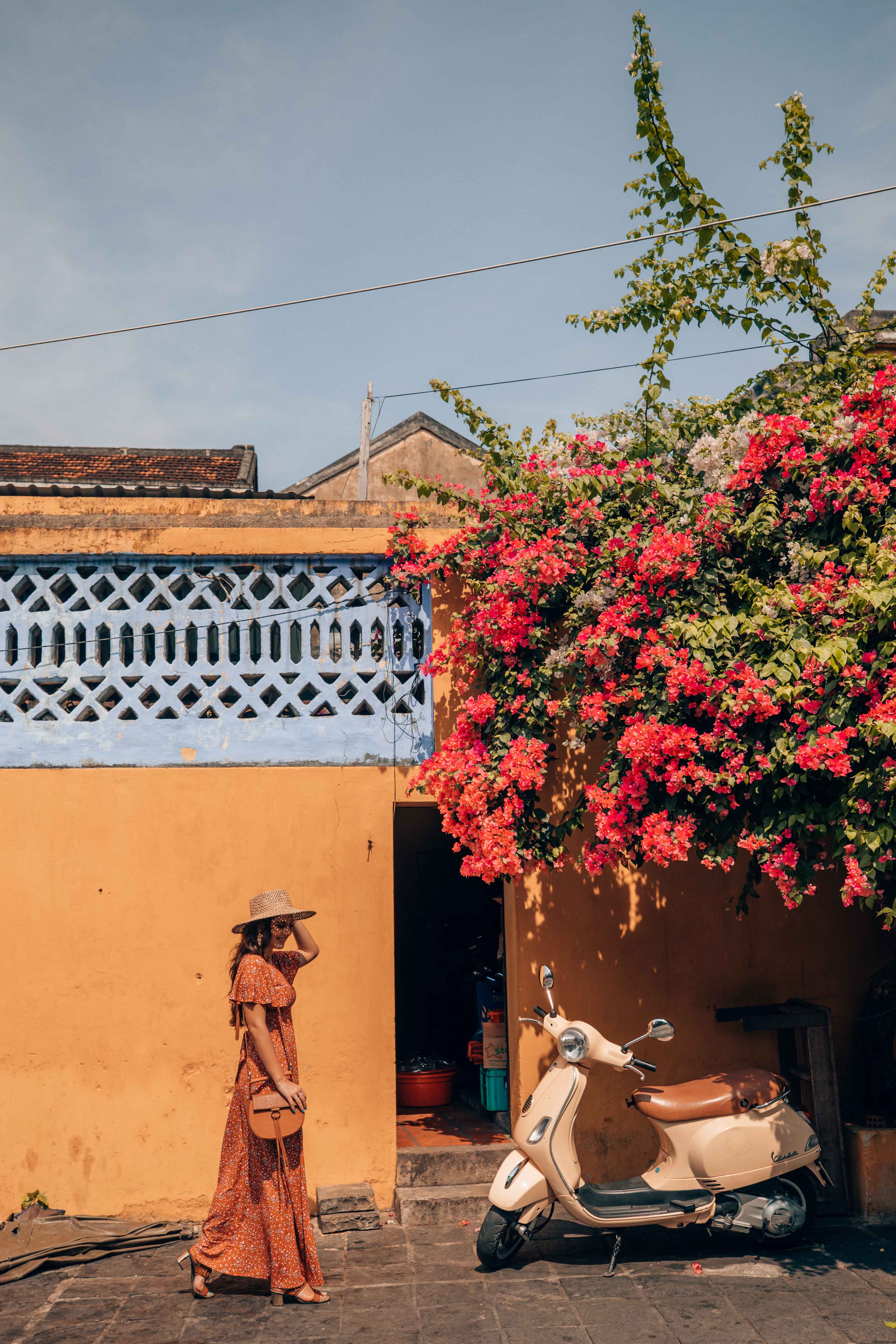 Scooter parked in front of a bougainvillea tree
Scooter parked in front of a bougainvillea tree
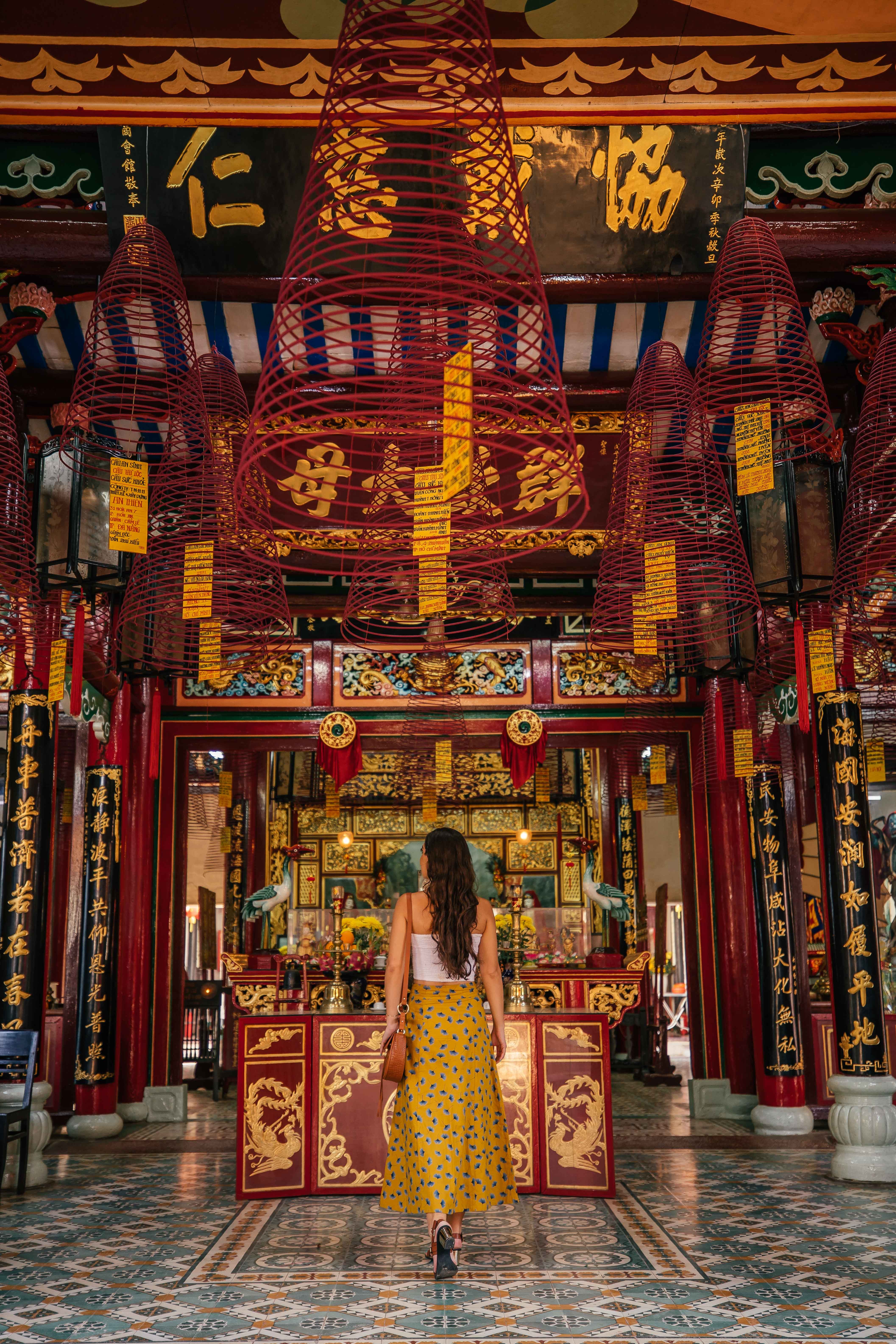 Temple in Hoi An
Temple in Hoi An
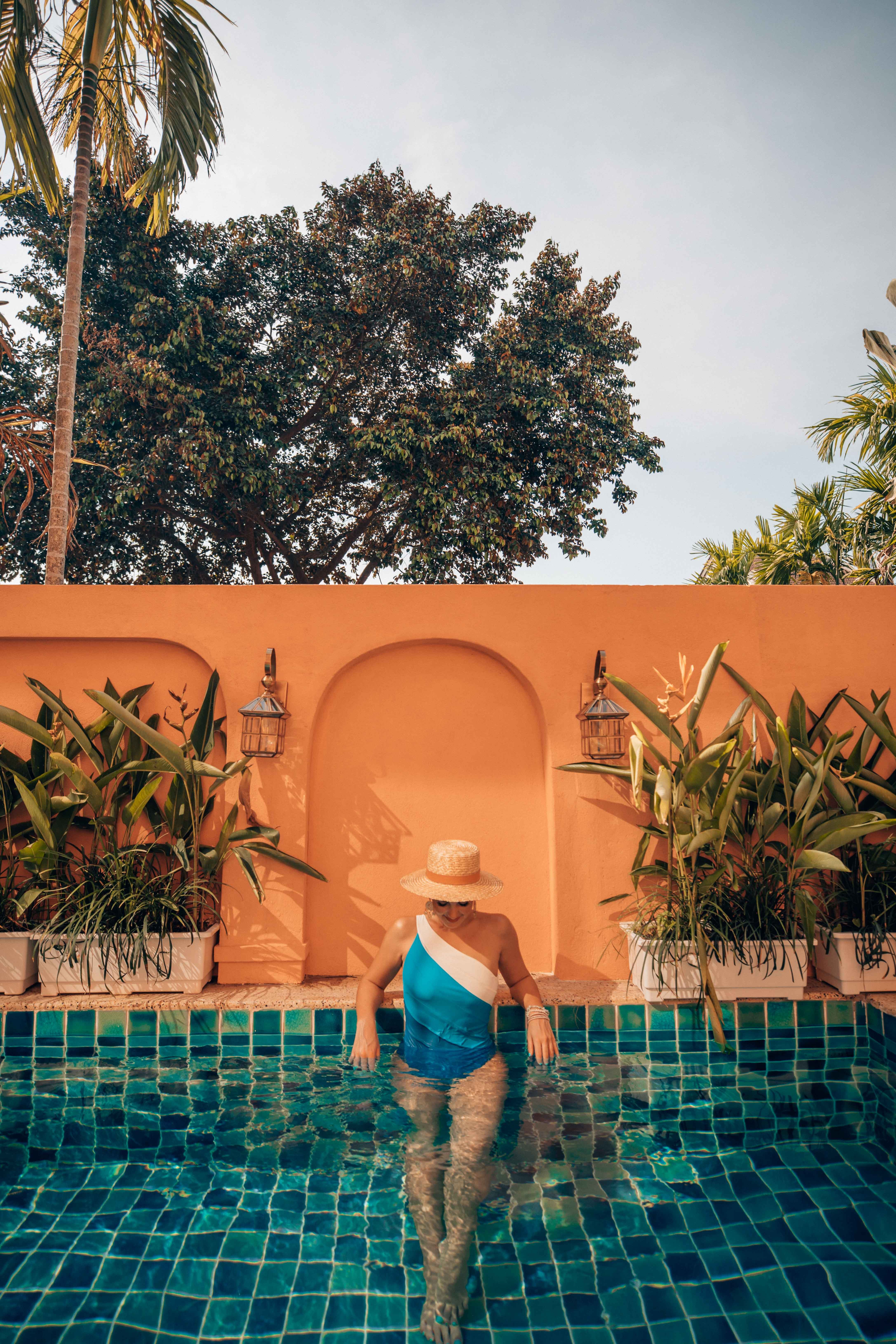 The Mansion Hoi An swimming pool
The Mansion Hoi An swimming pool
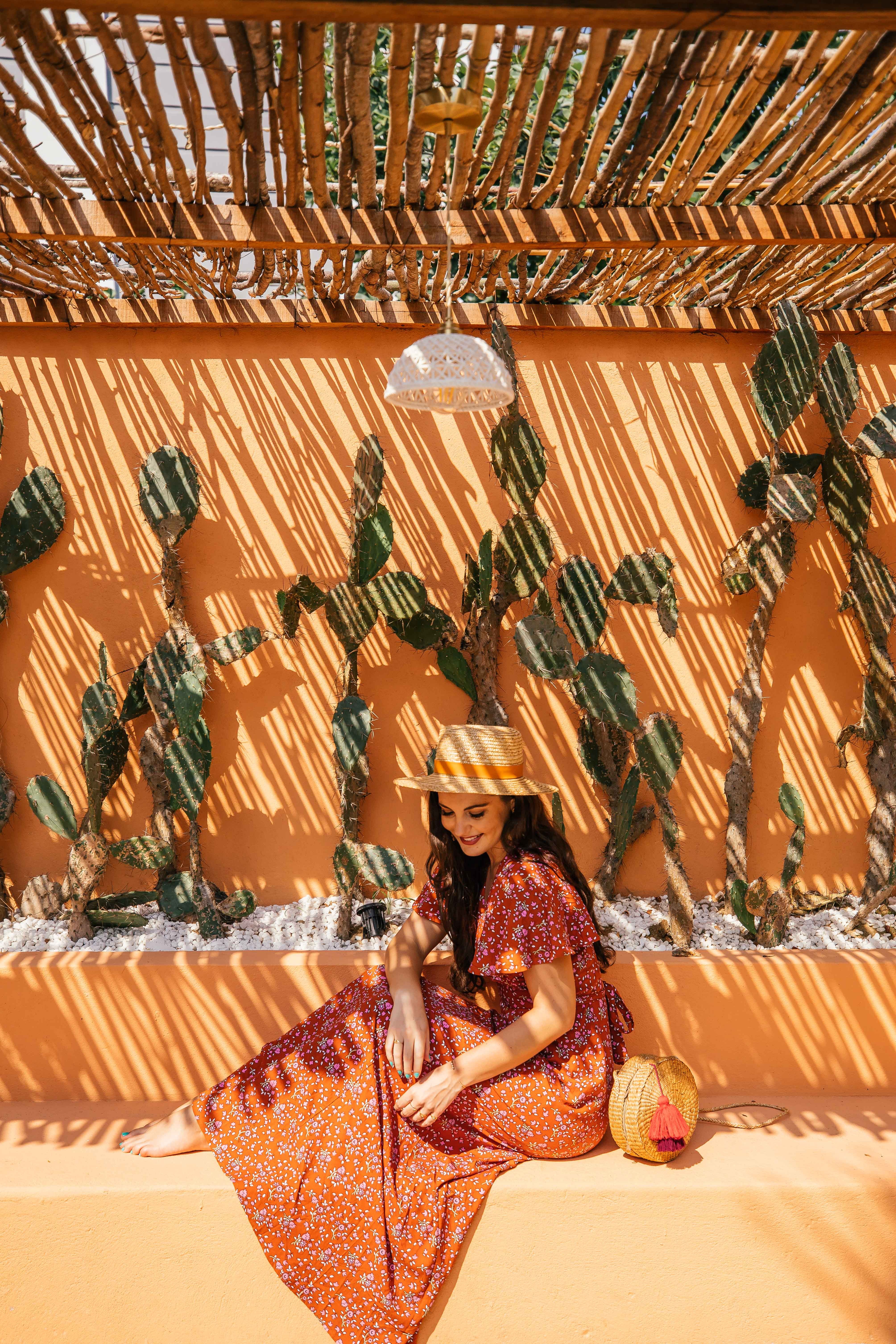 The Mansion Hoi An courtyard garden with cactus
The Mansion Hoi An courtyard garden with cactus
An inviting courtyard swimming pool at The Mansion in Hoi An, Vietnam.



